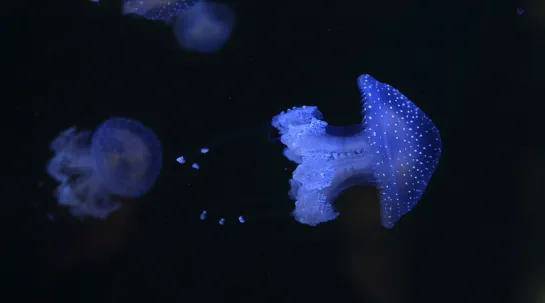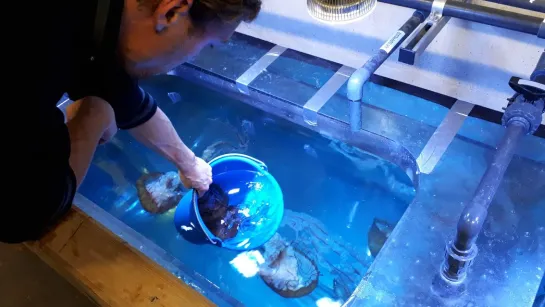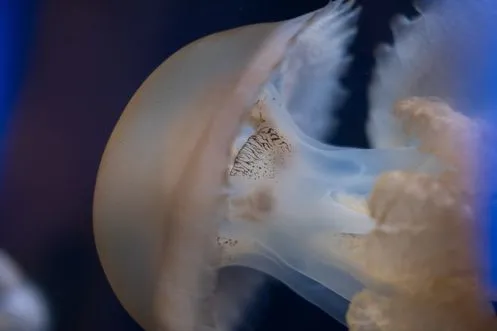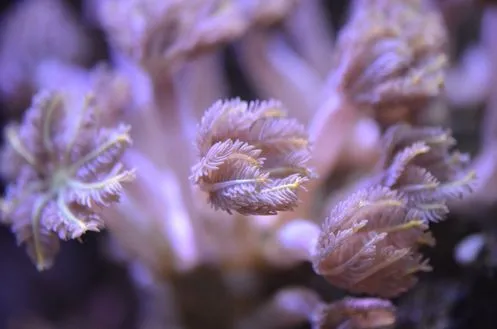Since it opened in 1991, Nausicaá has become an expert in breeding jellyfish. The jellyfish that you can see on display during your visit come directly from our reserves, where they reproduce and grow under the watchful eye of biologists.
Thanks to this knowledge and expertise, they are continually able to present the public with aquariums populated with new individuals.




